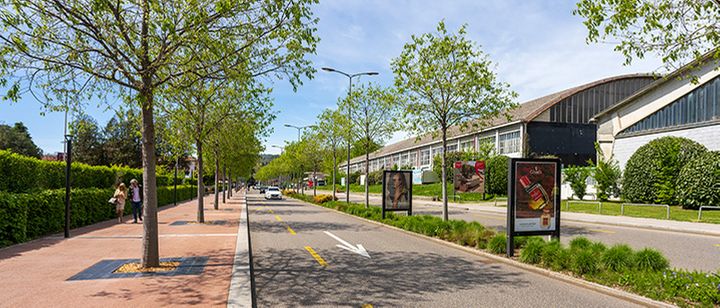Viale Castagnola

The City has carried out a series of interventions which, in addition to replacing the trees along Viale Castagnola, included the renovation of municipal pipelines and the infrastructure of other service companies, as well as the complete renewal of the pavement in the section between Via Capelli and Viale dei Faggi.
The felling of the horse chestnuts
The replacement of the tree line along Viale Castagnola became necessary following the sudden collapse of a horse chestnut tree in October 2017, which underscored the urgent need to act to prevent further incidents and ensure the safety of citizens. Expert assessments of the horse chestnut trees' condition confirmed the analysis conducted by Dr. Katrin Joos Reimer in 2014: the trees suffered from precarious root systems, injuries, and damage at the base of their trunks dating back to the late 1980s, compromising their stability. All the horse chestnut trees, which were 140 years old, were in an advanced stage of aging or decline.
After extensive studies, no viable alternatives to the complete replacement of the tree line were found for several reasons:
- from a safety perspective, due to the high risk of collapse, the City had to implement measures to protect public health
- from a botanical perspective, removing only some trees would have increased the risk of collapse of the remaining specimens, as they lacked sufficient root resistance to withstand adverse weather conditions. Additionally, new trees grow better when not overshadowed by large nearby specimens
- from a practical perspective, it was necessary to repair the road and infrastructure before planting new trees to avoid compromising the roots of already planted specimens
The project
The project, prepared by the City with the collaboration of an external consultant, restored two rows of trees: one on the southern sidewalk and one on the central island separating the carriageways. The two rows are parallel, and the trees are staggered to create as much space as possible between each tree, allowing for better canopy coverage.
The horse chestnuts were replaced with nettle trees (Celtis australis), a species particularly suited to urban environments. It is resistant to pollution and weather conditions, adapts to any type of soil, and tolerates asphalt covers well. Additionally, to ensure maximum stability and support for the trees, a root protection system (Tree Parker) was installed beneath the road surface. This system not only facilitates the proper development and longevity of the trees but also supports heavy loads, preventing pavement subsidence. The southern sidewalk was built with permeable and self-stabilizing concrete, a solution already adopted for Via Foce, giving the area a cohesive appearance.
The project also included well-designed urban furnishings: benches, modern lampposts for optimal lighting, and a new bus stop made entirely of glass, located between the sports area and the traffic zone.
The English version of this page was created with the aid of automatic translation tools and may contain errors and omissions.
The original version is the page in Italian.